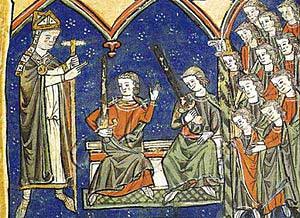When learning about the History of Santiago de Compostela there is one man that regularly comes up as the saviour, historian, architect and politician that made this city possible. We are of course talking about Diego Gelmírez or Xelmírez (Latin Didacus Gelmirici) (ca 1069 – ca 1149) who was the second bishop (from 1100) and the first archbishop (from 1120) of the Roman Catholic Archdiocese of Santiago de Compostela.

He is a prominent figure in the history of Galicia and an important historiographer of the Iberia of his day. Diego involved himself in many quarrels, ecclesiastical and secular, which were recounted in the Historia Compostelana, which covered his episcopacy from 1100 to 1139 and serves as a sort of gesta of the bishop’s life.

